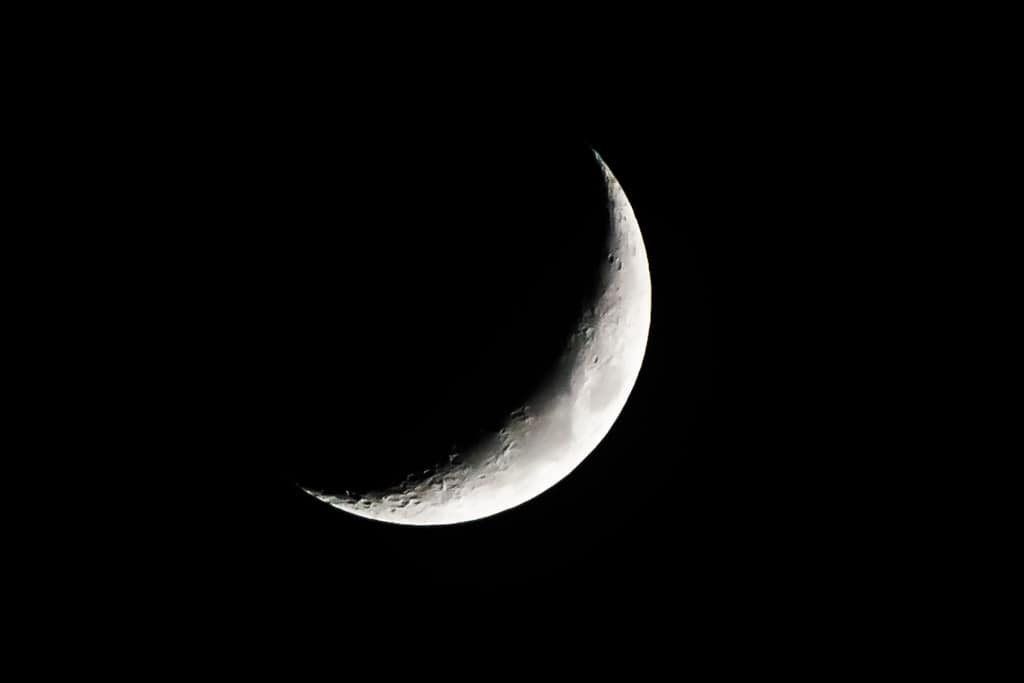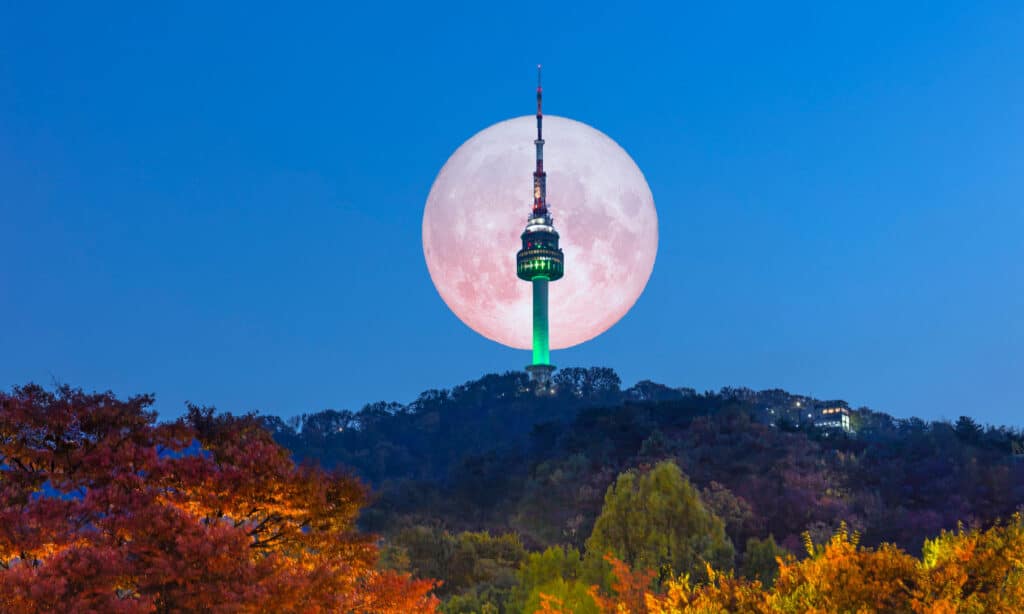When it’s bright, it’s the culmination of an expansion phase that calls forth rituals. The full moon is easily recognized but it’s not the moon’s only phase. When it’s waxing, its light is expanding. When it’s waning, its light is diminishing. Learn about the waxing vs. waning moon and how to tell the differences between them!
Understanding Moon Phases
New Moon
When there is a new moon, the sun is only illuminating the back part of the moon, which makes it appear more translucent. It doesn’t appear as the bright, bulbous light of the full moon. It’s the opposite, unlit and hardly perceptible.
Waxing Crescent
During the waxing crescent, you can barely see a sliver of the moon illuminated. Sometimes, you can make out the whole circle but the rest of the moon is much lighter, almost invisible.

During the waxing crescent, you can barely see a sliver of the moon illuminated.
©Clare McEwen/Shutterstock.com
First Quarter
During the first quarter, what you see is half the moon illuminated. You might wonder why the name refers to it as a quarter but that’s because you’re missing the other side of the moon altogether. You’re only seeing one side, therefore that half you see illuminated is only a quarter.
Waxing Gibbous
During the waxing gibbous, more of the moon is shining brightly. It’s not completely full but it’s about to be.
Full Moon
The full moon is the one you recognize most easily. The whole circle is illuminated, shining upon the earth brightly. Even at night, you have great visibility because of the light of the moon (assuming it’s not cloudy).

Waxing leads to the full moon whereas waning leads to the new moon.
©iStock.com/kamponwarit
Waning Gibbous
During the waning gibbous, the cycle continues, except it moves in the opposite direction. Less of the moon appears illuminated. It ends up looking like the opposite of the waxing gibbous.
Third Quarter
During the third quarter, you’re going to notice that the moon is only half lit again. Except this time, it’s on the other side.
Waning Crescent
The waning crescent is but a sliver yet again. It’s the only part of the moon that you can clearly see but you may be able to see the outline of the entire moon. This is the last sliver you see before the new moon appears yet again.
Waxing vs. Waning Moon: How to Tell the Difference
When the moon is waxing, that means it is becoming more and more illuminated each night. This is when it’s leading up to a full moon from the new moon phase. Once you reach the full moon phase, it starts waning. That’s when it’s getting less and less illuminated until it reaches the new moon. After the new moon, it starts waxing again and so, the cycle continues.
The photo featured at the top of this post is © Fernando Astasio Avila/Shutterstock.com
Thank you for reading! Have some feedback for us? Contact the AZ Animals editorial team.







